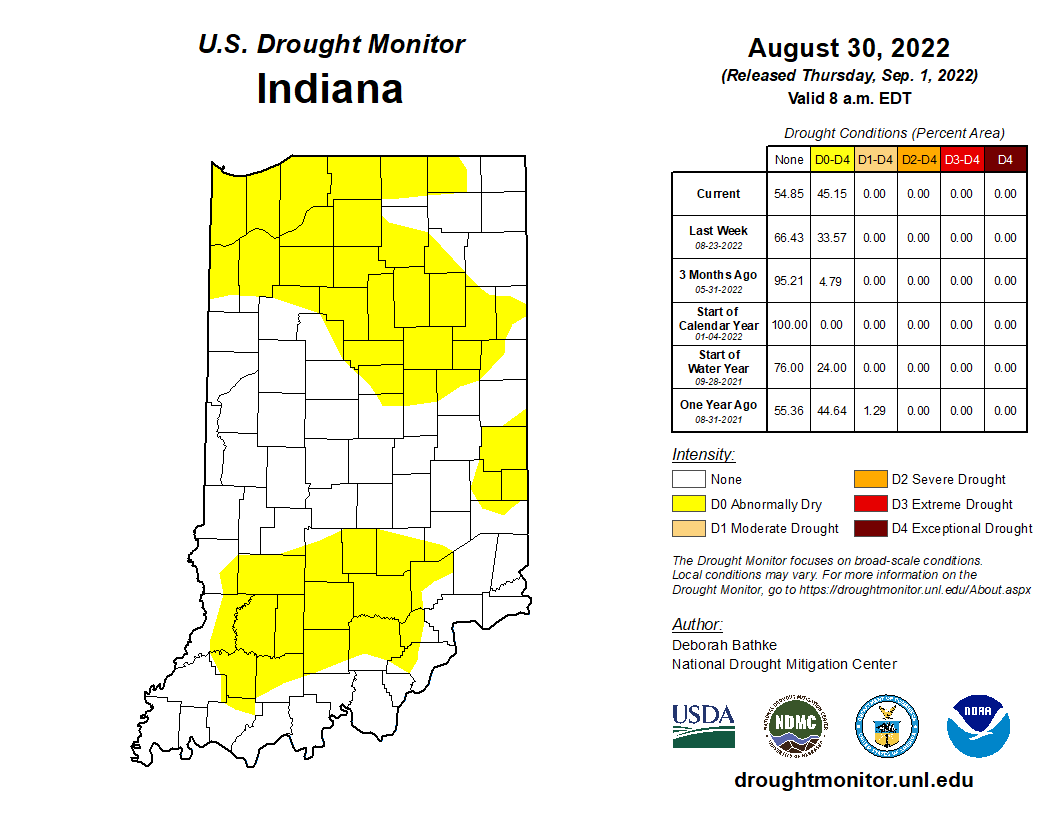
As has been the story throughout much of this summer, dry conditions have persisted in Indiana.


As has been the story throughout much of this summer, dry conditions have persisted in Indiana.

On this episode of the Purdue Crop Chat Podcast, Purdue Extension Soybean Specialist Shaun Casteel and Corn Specialist Dan Quinn welcome Indiana State Climatologist Beth Hall to discuss the weather extremes farmers have faced and might continue to face this season.
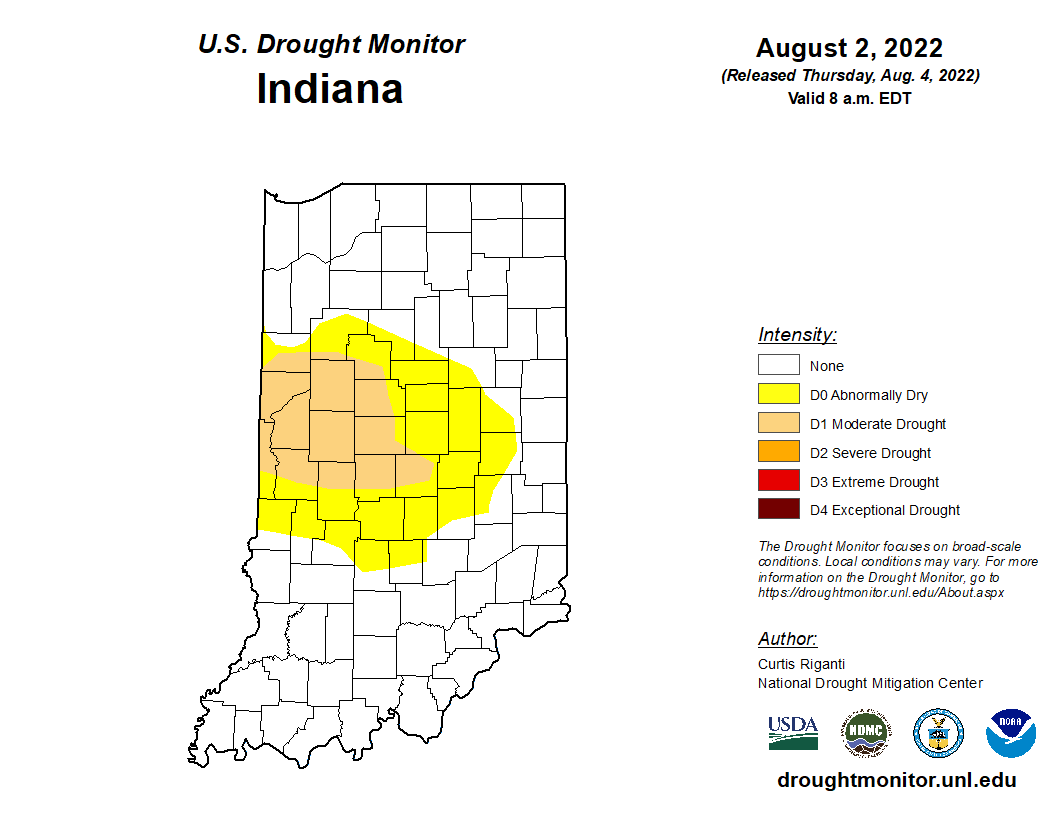
Since early June, Indiana has been seeing abnormally dry and moderate drought conditions gradually expand and intensify across the state.

Rainfall over the past few weeks has helped to improve drought conditions across much of Indiana.
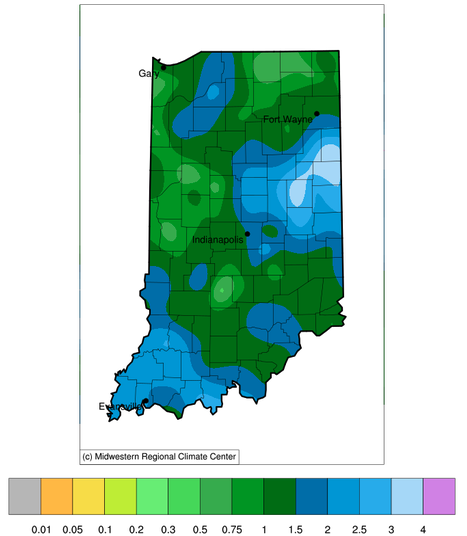
This past weekend brought some much-needed rain to the Hoosier state.
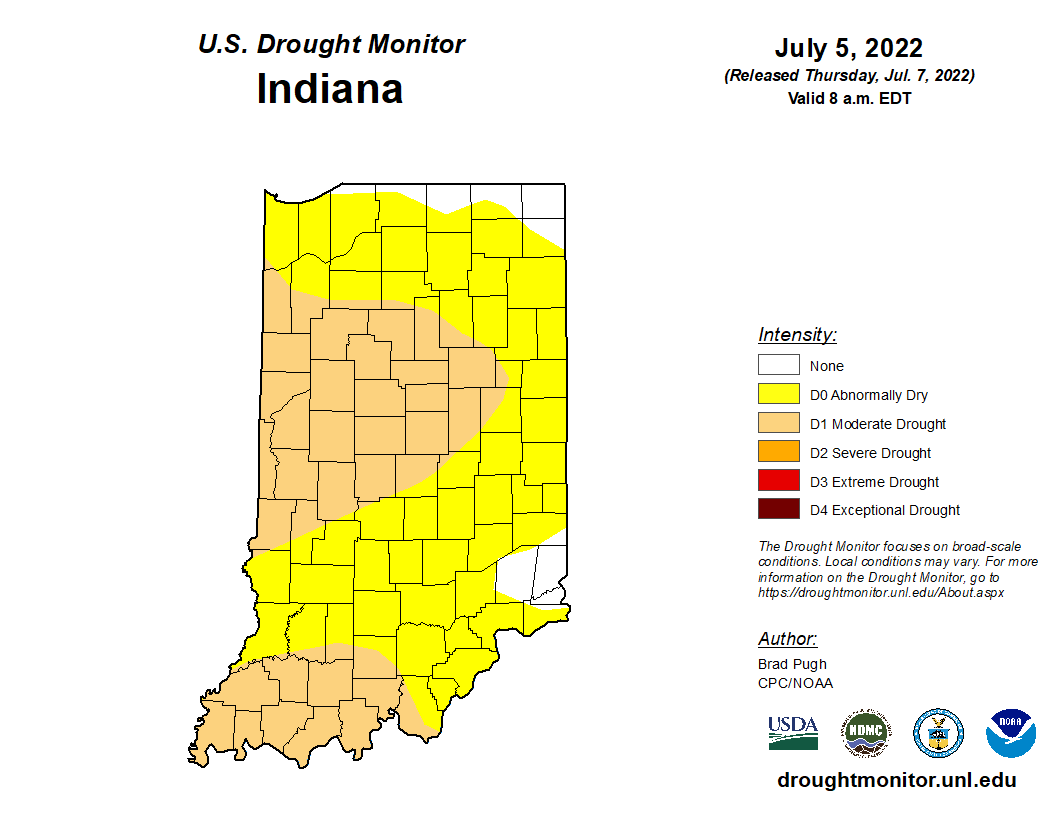
The latest release of the U.S. Drought Monitor has expanded and intensified drought status across Indiana (Figure 1).
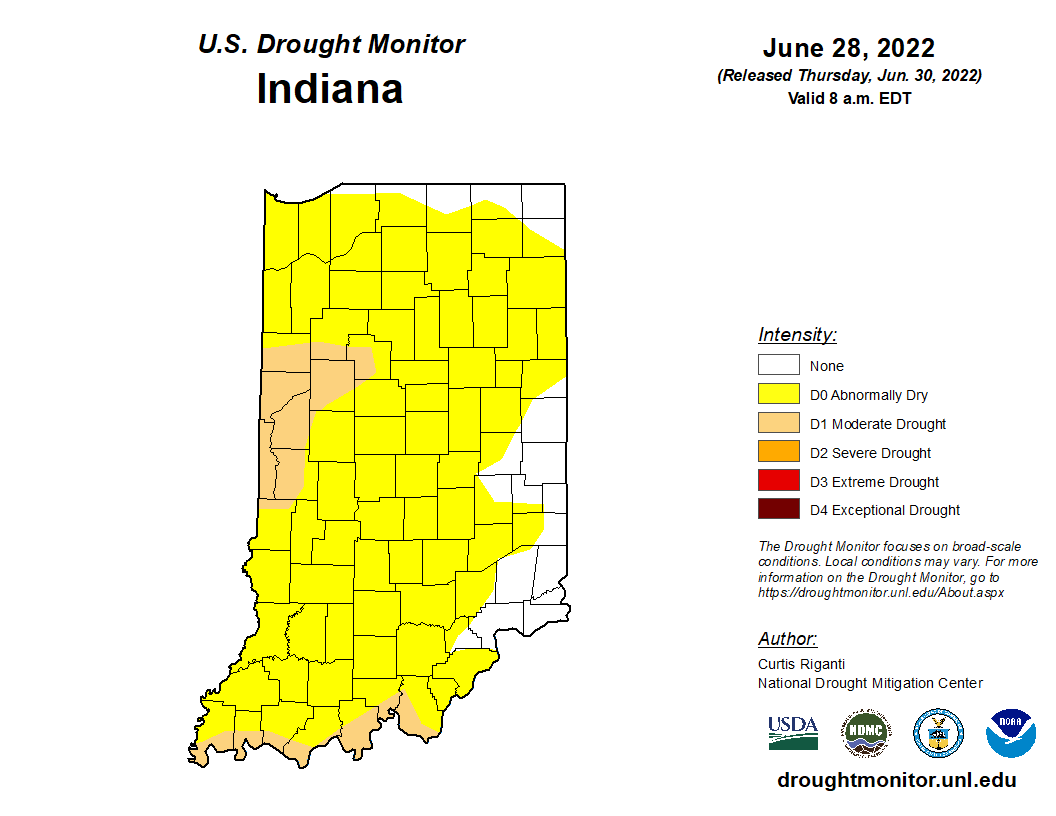
The most recent U.S. Drought Monitor now has over 87 percent of Indiana in some level of dryness and/or drought (Figure 1).
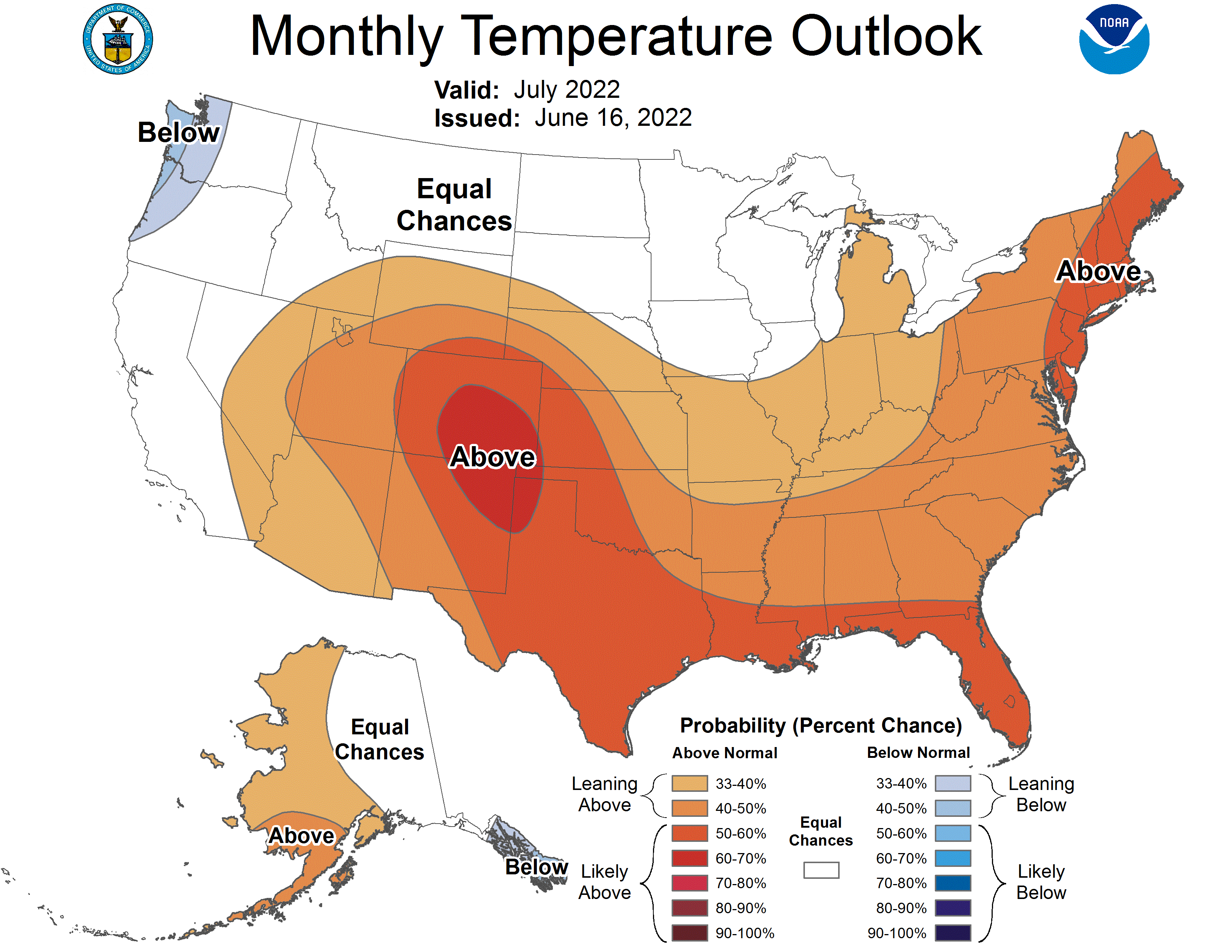
The climate outlooks are showing strong confidence that these hot temperatures will continue for a while.

In pastoral agricultural days, and on some farms around the state today, cattle, pigs, turkeys, and chickens roamed the countryside, held in relative place using fencing or a centralized food source.
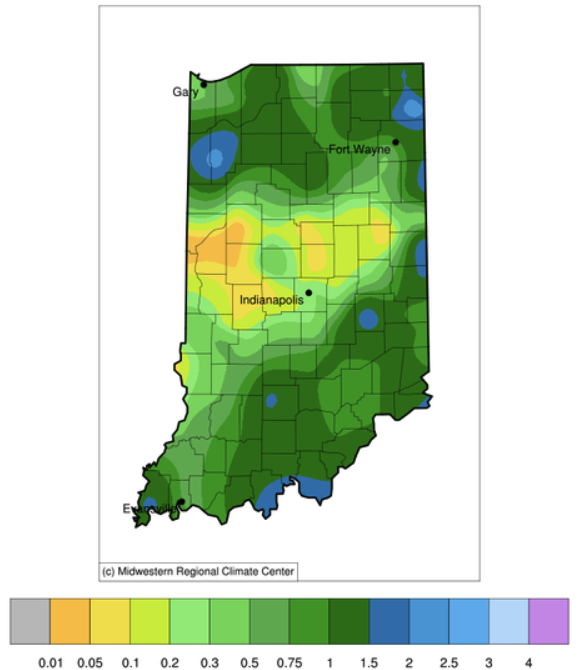
Rain continues to be spotty across Indiana with some areas getting the lion’s share while others are barely seeing a drop. When considering a recent 7-day period (June 1-7, 2022; Figure 1), central Indiana seemed to have missed out on most of the rain. This translated to central Indiana receiving around 5%-25% of what it normally received during that same period from 1991-2020 (Figure 2). However, if one considers the recent 30-day period (May 9 – June 7, 2022), the whole northern half of Indiana appears to have only received 25%-75% of what has normally fallen (Figure 3). The period of consideration when looking at recent climate is important, and no time frame is necessarily superior to another. It all depends upon the application. For example, being on the dry side over a 7-day period in May could be preferable for agriculture so planting can happen with fewer muddier fields. [Read More…]
© 2025 Purdue University | An equal access/equal opportunity university | Copyright Complaints | Maintained by Pest&Crop newsletter
If you have trouble accessing this page because of a disability, please contact Pest&Crop newsletter at luck@purdue.edu.